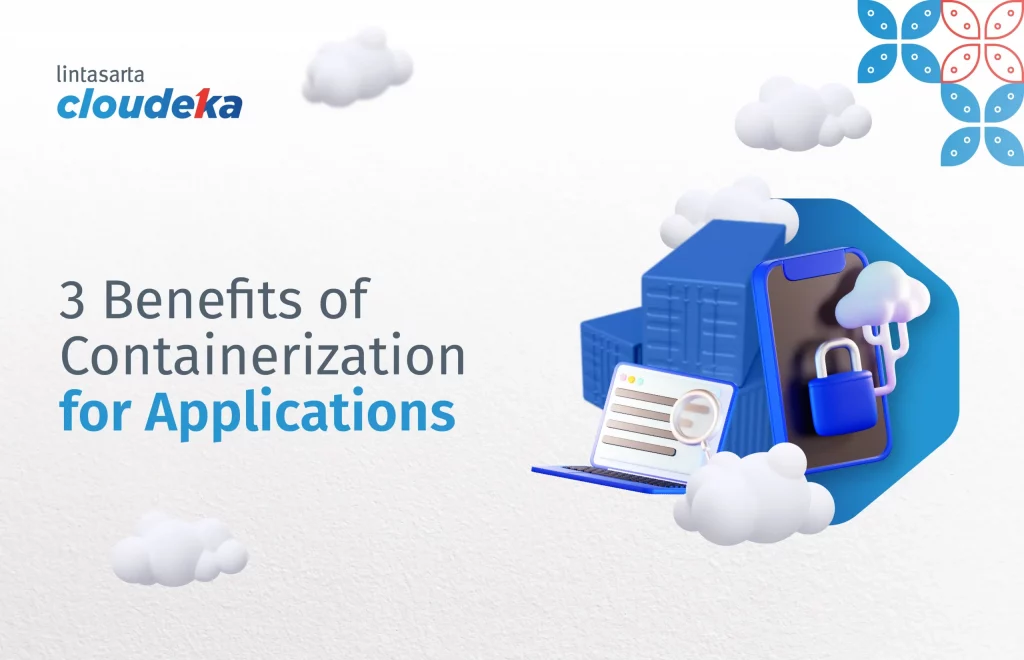When an enterprise moves its application to a Cloud Computing service, the choice that is often made is to take advantage of the virtualization process. By utilizing virtual machines (Virtual Machines or VMs), system managers can move their infrastructure from on-premise Data Centers to Cloud Computing services through the IaaS (Infrastructure as a Service) model, easily and quickly.
However, virtualization is not the only way to run applications in Cloud Computing. Another alternative that is starting to dominate is containerization, which Accenture calls one of the Cloud Computing trends in 2021. In containers, applications are packaged simply with the required software libraries, without having to include virtual devices with the operating system.
Containerization was previously predicted to be the choice of many leading companies around the world. A survey conducted in 2019 by market research institute Market Cube said that 87% of respondents were already running container technology. Of the organizations that use container technology, 90% run it in the production phase.
Gartner predicts that 75% of global enterprises will run more than two applications in containers by 2023. Compare that to the statistics in 2020, when only 30% of global companies used containers.
Disadvantages of virtual machines in Cloud Computing
In many cases, virtualization to run business applications can still be an option. System administrators can still manage their infrastructure as on-premises devices without having to make many adjustments. The difference is, companies no longer need to buy, manage, and maintain physical resources, such as servers, storage, and network devices. Companies also don’t need to think about supporting infrastructure such as electricity, cooling, and physical security.
There is another possibility, namely that previous companies have even utilized virtualization technology in on-premise infrastructure. Virtualization can be done for reasons of efficiency and better utilization of hardware resources in the company’s Data Center. In this case, it is relatively easy to move an existing instance to a Cloud service, and take advantage of the other benefits that a Cloud Computing environment provides.
However, the use of Cloud Computing services like this has its own problems. The system manager may no longer have to deal with the physical aspects of the infrastructure, but still have to maintain other aspects, such as the operating system, other software, and security.
This operating system and other software also consumes processor, memory, and data storage resources provided by Cloud Computing services. When a company runs multiple virtual machines for different applications, resources are wasted.
Maximizing the excess of containers
For enterprises, the use of containers in Cloud Computing services offers a number of advantages, over the use of classic IaaS services that are based on virtualization.
Because a single container consists of only the application and supporting software libraries, containers are more efficient in consuming processor and memory resources than virtual machines. Launching applications from containers can also be faster (more than 10 times), in seconds. The container size of only tens of megabytes allows launching multiple applications at a time with minimal resource consumption.
aya-kompetisi-bisnis
Containers are also portable, can be run and moved on various Cloud services (public or private), or also on premise installation when needed.
However, in order for enterprises to fully reap the benefits of container technology, enterprises need to embrace a new paradigm in application development. Containers are the foundation of the DevOps paradigm, which combines development (development or dev) and operations (operations or ops) divisions.
Since a container can be launched and removed in a matter of milliseconds, this technology is suitable for application development methods with continuous integration/continuous deployment. In this model, the developer packs the latest version of the application in a container, which can then be deployed to production after passing automated testing. If a problem occurs, it is very easy to remove this new container and revert to the old version of the container.
However, managing this container is not easy, because it requires resources with sufficient skills and flight hours so that the operating conditions are constant and always prime. Therefore, Cloudeka provides Deka Harbor for customers organize and manage applications in the form of an orchestration container.
In collaboration with Red Hat OpenShift, Deka Harbor enables your company to package and launch business applications in agile and scalable container form. With this service, you can add features and launch the latest version of your app to the public, quickly and efficiently. Your business can be more agile and competitive because it can more quickly improve services and offer the latest products.
To find out more, please contact us.
